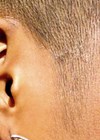Audiology features
Technological advances in hearing aids and their significance for people with hearing loss during a period of more than 100 years
Over a century of progress in hearing aid technology has transformed the lives of those with hearing impairments. From the bulky, conspicuous devices of the past, to today’s sleek, AI-powered solutions, this article explores the three key eras of development....
The history of person-centred hearing care
In the World Report on Hearing, launched by the World Health Organization (WHO) on 3 March 2021, the use of person-centred care is highly recommended. In this article, we learn about the history of person-centred healthcare and hearing care. But...
The history of bone-conduction devices
The evolution of bone-conduction hearing devices from the 1400s’ rudimentary designs to today’s advanced models has greatly improved hearing for individuals with conductive or mixed hearing loss. This article delves into the history and technical advancements over the years, as...
Implants and the identity of self
Hearpeers is MED-EL’s international community for people with hearing implants and those considering getting a hearing implant, as well as their families and friends. This group enables people to connect with hearing implant recipients from around the world to learn...
Deaf identity in audiology services: exploring the significance and implications
Dr Celia Hulme, a culturally Deaf * sign language user, draws from her personal experience and extensive PhD research on Deaf signers’ experiences with audiology services. *In this article, the convention of using an uppercase ‘D’ is used to denote...
Celebrating deaf identity through art: the ‘Hearing Care for ALL’ Virtual Gallery Project
Dr Dalia Tsimpida tells us about the art initiative she created in the midst of the pandemic to promote ear and hearing care, and celebrate the vibrant and diverse world of deaf identity. In the face of the COVID-19 pandemic,...
Be who you needed when you were younger
Trainee audiologist, deaf England futsal player and deaf advocate Zara Musker discusses finding her own deaf identity: “It’s part of me but not all of me”. Am I an audiologist? A deaf England futsal player? An advocate for deaf individuals?...
Embracing deafness and the silent world
Brian Kokoruwe shares his journey from growing up during civil war in Nigeria to becoming Director of Deaf UK Athletics and a published author. While I am active in the Deaf BSL community, involved in Deaf sports and the Government...
Deaf identity is not cookie cutter shaped: a CI user in a hearing world
Sam Burgess tells us what deaf identity means to her as a service manager in a busy healthcare library, with a cochlear Implant. To begin with, I have been deaf since birth due to congenital rubella. I have not known...
The accidental audiologist
In this article we hear from Muhammed Ayas, an “accidental” audiologist applying his transferable skills as a clinician, academic, and researcher through trying and testing innovative approaches in audiology to better serve the community. My audiology journey began 22 years...
A path to leadership
In this article we learn more about the Ruth Thomsen’s journey in audiology and healthcare science, exploring the opportunities on the road less travelled. “Two roads diverged in a wood, and I—I took the one less traveled by,And that has...
From clinics to campaigns: my audiological career so far
In this article we hear about the Franki Oliver’s journey from clinical practice in audiology to the third sector. Hi! I’m Franki and I’m the audiology manager at the Royal National Institute for Deaf People (RNID), a charity supporting people...

















